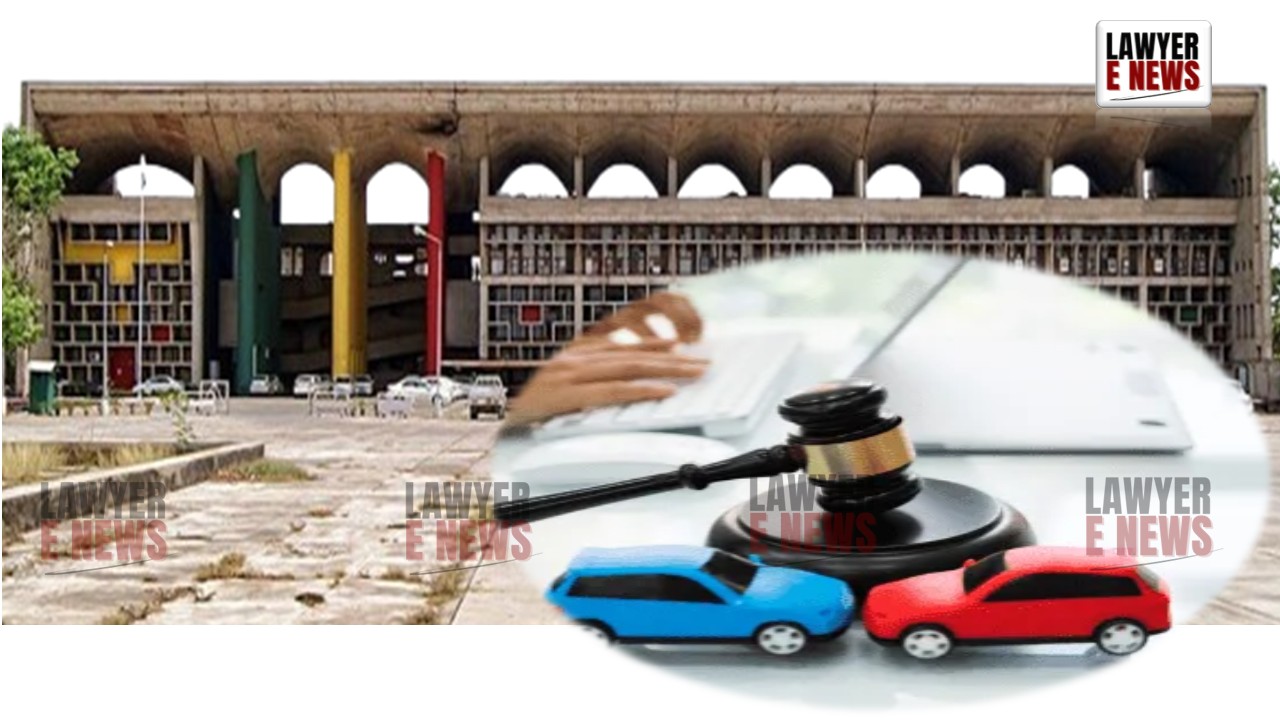-
by Admin
14 December 2025 5:24 PM



“Merely driving a Jugaad vehicle cannot impute contributory negligence unless an overt act is established” - Punjab and Haryana High Court allowed an appeal against a 1994 MACT award and enhanced the compensation granted to a 22-year-old accident victim whose right leg was amputated after being hit by a U.P. Roadways bus.
Justice Pankaj Jain held that the Motor Accident Claims Tribunal (MACT) had erred in attributing 50% contributory negligence to the claimant merely because he was operating a non-registered 'Jugaad' vehicle at the time of the accident. The Court ruled that contributory negligence must be based on evidence of actual wrongdoing, not assumptions.
The Court accordingly set aside the finding of contributory negligence and enhanced the compensation from ₹62,564 to ₹3,51,000, with 9% interest on the enhanced sum.
The accident occurred on 11 December 1993, when Bijender Singh, aged 22, was travelling with his brother in a 'Jugaad' vehicle (an unregistered locally fabricated transport) and was struck by a bus bearing registration no. UP-80E-9860, owned by U.P. Transport Corporation.
Singh's right leg was crushed, necessitating amputation, and resulting in a 50% permanent disability.
The Motor Accident Claims Tribunal, in its award dated 17 December 1994, held both the claimant and the bus driver equally negligent, awarding only half of the assessed compensation (₹62,564 out of ₹1,25,128).
“No Overt Act Attributable to Claimant – Finding of Contributory Negligence Unsustainable”
The Court noted that the FIR was registered against the bus driver, and the claimant was travelling at only 20 km/h, whereas the bus was being driven “at a very high speed.”
“Merely for the reason that the claimant was driving a Jugaad vehicle without there being any overt act attributable which led to cause of accident, the Tribunal ought not have held the appellant negligent.” — Para 9
Accordingly, the Court modified the Tribunal’s finding on Issue No.1, holding that only the respondent (bus driver) was responsible for causing the accident.
“Compensation Must Reflect Future Prospects and Pain & Suffering”
The High Court found the Tribunal’s computation to be flawed for ignoring future prospects, pain and suffering, and other critical heads such as special diet, attendant charges, and future medical expenses. Justice Jain observed:
“Nothing has been paid on account of future prospects... nor for pain & suffering, special diet, attendant charges and future medical expenses.”
The revised compensation structure included:
• Monthly income: ₹1,000 (minimum wage)
• Multiplier: 18 (instead of 15, based on age)
• Future Prospects: 40% addition
• Loss of future earnings (50% disability): ₹1,51,200
• Medical expenses: ₹25,128
• Pain and suffering: ₹50,000
• Special diet: ₹5,000
• Attendant charges: ₹10,000
• Future medical expenses: ₹10,000
• Total Compensation: ₹3,51,000
“The multiplier of 15 was wrongly applied despite claimant being aged only 22... Future prospects at 40% must be considered in line with prevailing law.” — Para 10
The appeal was allowed with the following conclusions: “The findings recorded by the Tribunal on issue No.1 need to be modified. Respondent No.1 is held to be responsible for causing accident.”
“The petitioner Bijender Singh is entitled for a compensation amount of ₹3,51,000.”
The interest awarded by the Tribunal was maintained, and the respondents (driver and owner of the bus) were held jointly and severally liable to pay interest @ 9% per annum on the enhanced compensation from the date of the award till realization.
The Court also clarified that any amount already paid shall be adjusted/set off from the enhanced amount.
Date of Decision: 27 March 2025
